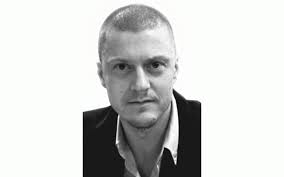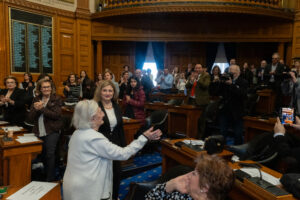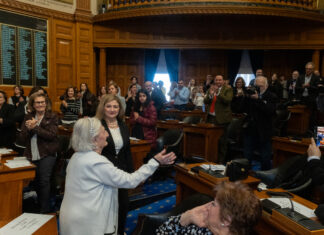By Matthias Bjørnlund
From 1915, the Danish relief worker and teacher Karen Jeppe witnessed  and experienced the Armenian Genocide first-hand in the Ottoman town of Urfa: the death marches, the massacres, the massive, systematic violence (sexual and otherwise), and the crushing of the desperate resistance in the Armenian quarter, experiences that drove her to attempt suicide in 1916. For her and many others like her, part of the process of trying to make sense of something so thoroughly unbelievable, unfair, almost surreal at times, and of trying to explain what was going on to the outside world was finding a proper terminology for the events. That is, finding one or a few words that could somehow encapsulate at least some vital aspects of a process of extermination that defied the imagination and was, according to many contemporary observers, unlike anything the world had ever seen.
and experienced the Armenian Genocide first-hand in the Ottoman town of Urfa: the death marches, the massacres, the massive, systematic violence (sexual and otherwise), and the crushing of the desperate resistance in the Armenian quarter, experiences that drove her to attempt suicide in 1916. For her and many others like her, part of the process of trying to make sense of something so thoroughly unbelievable, unfair, almost surreal at times, and of trying to explain what was going on to the outside world was finding a proper terminology for the events. That is, finding one or a few words that could somehow encapsulate at least some vital aspects of a process of extermination that defied the imagination and was, according to many contemporary observers, unlike anything the world had ever seen.
Karen Jeppe and very many other eyewitnesses would then use parts of the vocabulary identified by, e.g., Alan Whitehorn in Describing the Indescribable: 1915, i.e., interchangeable terms like “race extermination,” “holocaust,” “crimes against humanity and civilization,” “annihilation,” and ”massacre.”[i] Because we mainly understand and explain the world through written and spoken language, or rather: we try to, and we often fail. Jeppe’s ‘favorite’ expression for the Armenian genocide happened to be her very own: “The Big Death” — “Den Store Død” in Danish. Like other contemporary expressions, such as the Armenian Medz Yeghern/Great Catastrophe, it is in some ways an aptly poignant term, as it conjures a simple, powerful image of massive suffering and total destruction. In other ways, however, it is not a very precise term, as it leaves out the criminal and intentional aspect of the annihilation project, since death on a big scale can be caused by a variety of factors, ranging from intentional slaughter to earthquakes.
It is well known that finding just that — a proper and precise legal-historical term denoting the intentional physical and cultural destruction of groups such as the Ottoman Armenians and the European Jews — was what drove Polish-Jewish lawyer Raphael Lemkin to coin the phrase “genocide” during World War II, and lobby for international laws defining, condemning and punishing this ultimate crime against humanity. It was, however, not the first time similar semantic considerations had been aired regarding the destruction of the Ottoman Armenians. The modern legal-historical term “genocide,” which can simply be translated as “the murder of a people/race/tribe” or “the physical and cultural destruction of a nation,” is called “folkemord/folkedrab,” “folkmord,” “folkemord/folkemorde,” and “Völkermord/Genozid” in Danish, Swedish, Norwegian and German, respectively. And before, during, and shortly after the Armenian genocide, we find examples of those terms being used by contemporary Scandinavian and German or German-speaking observers — politicians, diplomats, intellectuals, etc. — to denote systematic anti-Armenian and generally destructive policies during the reigns of both the authoritarian Ottoman Sultan Abdülhamid II and the dictatorial Young Turk leaders of the Committee of Union and Progress (CUP).
The first (variations of) such instances that have been recorded and found pertain to the Abdülhamid massacres of some 200.000-300.000 Armenians during the years 1894-1896, and, more generally, to the climate of persecution and repression created by the Sultan’s regime in the Ottoman Empire and among exiled dissidents. In 1899, Mustafa Resik, one of many leading Young Turks in European exile, denounced the Ottoman Sultan as a despot who tarnished the empire through his “volkmörderischen Regierung,” a German term we would translate as “genocidal government” today. According to Resik, the genocidal behavior of the Ottoman regime included the recent Armenian massacres.[ii] And in 1906, the then well-known Swedish-Danish adventurer, editor, and writer Maria Anholm used the term ”folkmord” directly and explicitly to describe the Abdülhamid massacres and the ongoing oppression of the Ottoman Armenians, which she believed had the complete destruction of the group as a goal. She had interviewed Armenian massacre survivors herself in the Russian part of the Caucasus in 1901-1902, and returned to Sweden with stories of ”the saga of the Armenians, written in blood and tears.”[iii]
With the beginning of the Armenian Genocide in 1915, the question arose once more of how to name such massive human destruction. This should come as no surprise, given the fact that the Armenian Genocide was widely recognized by well-informed contemporary observers as an unprecedented, thoroughly intentional and extremely violent attempt at completely eradicating the Ottoman Armenians — also when compared to, say, the Abdülhamid massacres of the 1890s, the persecution of all or most other groups during the First World War, etc. And once more, variations of the term folkemord/Völkermord were used, besides from the widespread use of closely related expressions such as “the murder of a people,” “a people is being murdered,” etc.










